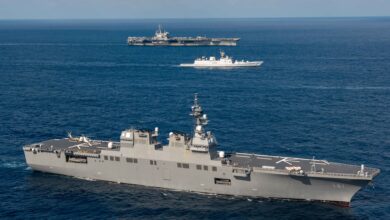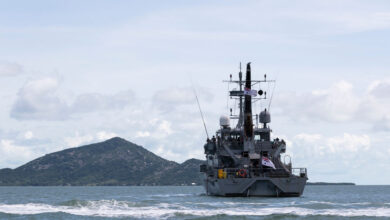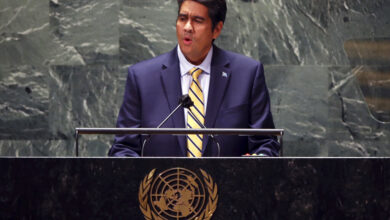Scientists say failed missile test shows Russian pattern of risk, deception

The August 8, 2019, explosion of what experts believe was a nuclear-powered cruise missile killed five Russian engineers, injured others and renewed lingering questions about whether the Russian government conducts dangerous tests without regard for the safety of its citizens and neighbors.
Changing statements from Russian authorities following the failed test were reminiscent of Soviet-era deception during the 1986 Chernobyl incident. Radiation from the Chernobyl reactor explosion set off alarms at a nuclear plant in Sweden. The Soviet Union denied a disaster had occurred when contacted by Swedish authorities and only admitted an explosion took place when Sweden said it was prepared to file an alert with the International Atomic Energy Agency.
A similar pattern emerged after the recent explosion, pictured. The Russian Defense Ministry initially said the explosion involved a liquid-propellant rocket engine, according to The Associated Press (AP), and that it killed two people and injured six. The ministry said no radiation was released, although officials in nearby Severodvinsk already had reported a brief spike in radiation levels.
Two days later, Russian nuclear agency Rosatom acknowledged the explosion occurred at an offshore platform in the White Sea, but this time the Russians said the test involved a “nuclear isotope power source.” Rosatom later said five nuclear engineers were killed and three people were wounded. (
Scientists from around the world concluded the Russians were testing a nuclear-powered cruise missile code-named Skyfall by NATO. “Liquid fuel missile engines exploding do not give off radiation, and we know that the Russians are working on some kind of nuclear propulsion for a cruise missile,” Ankit Panda, an adjunct senior fellow with the Federation of American Scientists, told Reuters.
A senior Trump administration official, who spoke to Reuters on condition of anonymity, also expressed skepticism. “This reminds us of a string of incidents dating back to Chernobyl that call into question whether the Kremlin prioritizes the welfare of the Russian people above maintaining its own grip on power and its control over weak corruption streams,” the official said.
The test, which occurred 1,000 kilometers north of Moscow, clearly involved a nuclear propulsion system, one expert said.
Jeffrey Lewis, director of the East Asia Non-Proliferation Program at the Middlebury Institute of International Studies, told Reuters his team examined Automatic Identification System signals from ships located off the coast of Russia on the day of the explosion. The signals identified one ship as a nuclear fuel carrier. “You don’t need this ship for conventional missile tests,” Lewis said. “You need it when you recover a nuclear propulsion unit from the sea floor.”
Nuclear watchdog groups also pointed to Russia’s lack of transparency about radiation. The Comprehensive Nuclear Test Ban Treaty Organization said several Russian radiation monitoring stations went silent shortly after the August 8 explosion but are now back in operation. William Tobey, a former deputy administrator at the U.S. National Nuclear Security Administration, told AP it was “at least an odd coincidence” that the Russian sensors stopped transmitting data when the explosion occurred.
City officials in Severodvinsk said radiation levels there rose to 20 times the average reading for 30 minutes on August 8. Norway authorities said later in the week that low levels of radiation had been detected in their country about 805 kilometers from the test site.
Nuclear-powered missiles for years have been considered a risky proposition. The U.S. worked to develop one in the 1960s but eventually discarded the idea because it was considered impractical and too risky for civilians. Russia’s apparent revival of the concept raises significant questions, Tobey said.
“Effectively, Russia is thinking about flying around nuclear reactors,” Tobey said. “The very idea of this system is, I think, a risky system. It probably poses more risk to the Russian people than to the American people. If it crashes, it could spread radiation, and apparently, the system is not particularly reliable.”
The failed test occurred less than a week after the U.S. withdrew from the Intermediate-Range Nuclear Forces Treaty with Russia. The U.S. said it withdrew because Russia for years had been in violation of the treaty, which banned nuclear and conventional ground-launched ballistic and cruise missiles with ranges of between 500 and 5,500 kilometers.




